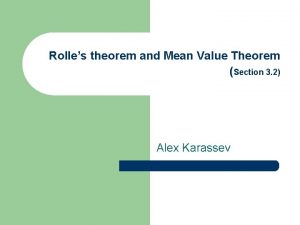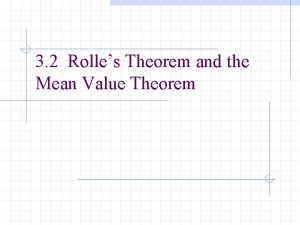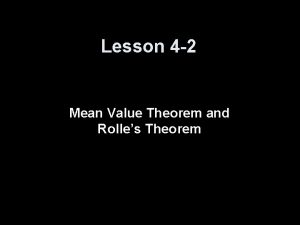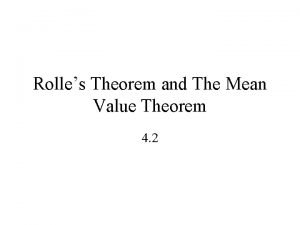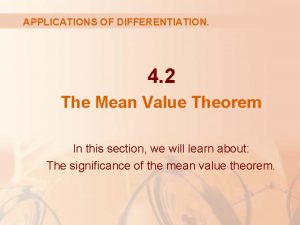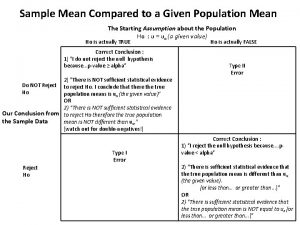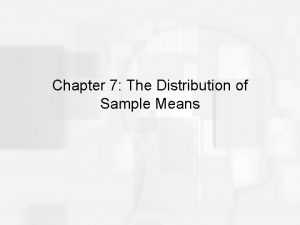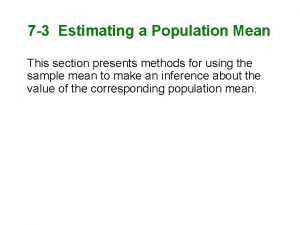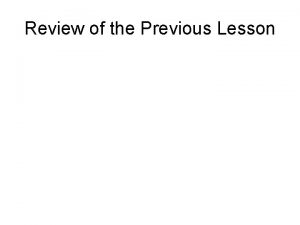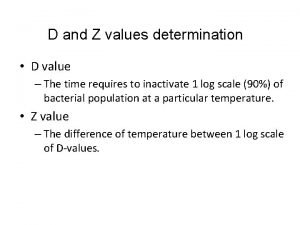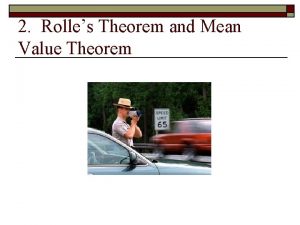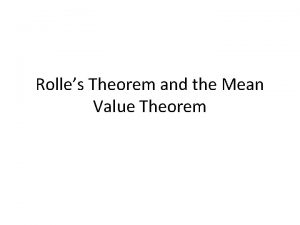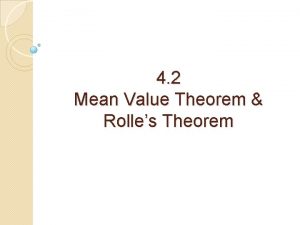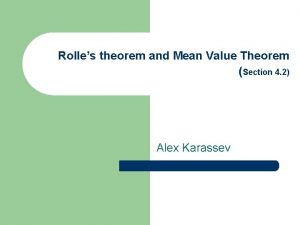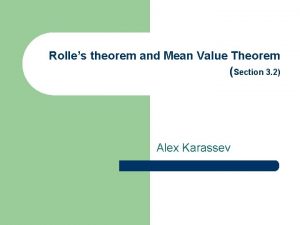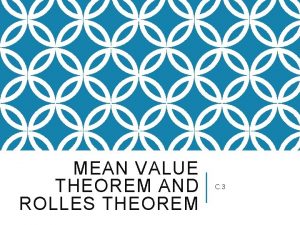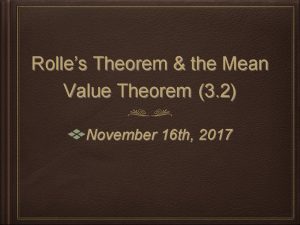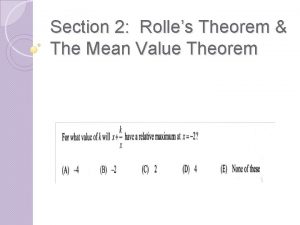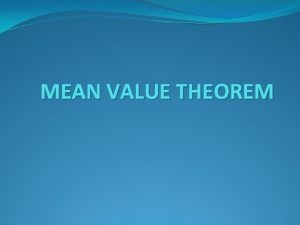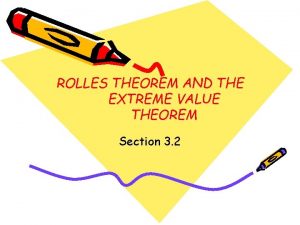Rolles Theorem and The Mean Value Theorem 4














- Slides: 14

Rolle’s Theorem and The Mean Value Theorem 4. 2

Mean Value Theorem for Derivatives If f (x) is a differentiable function over [a, b], then at some point between a and b:

Mean Value Theorem for Derivatives If f (x) is a differentiable function over [a, b], then at some point between a and b: Differentiable implies that the function is also continuous.

Mean Value Theorem for Derivatives If f (x) is a differentiable function over [a, b], then at some point between a and b: Differentiable implies that the function is also continuous. The Mean Value Theorem only applies over a closed interval.

Mean Value Theorem for Derivatives If f (x) is a differentiable function over [a, b], then at some point between a and b: The Mean Value Theorem says that at some point in the closed interval, the actual slope (instantaneous rate of change) equals the average slope (average rate of change).

Slope of tangent: Tangent parallel to chord. Slope of chord:

Example • Suppose you have a function f(x) = x^2 in the interval [1, 3]. To find c, set derivative = to 4

There can be more than 1 value of c that satisfy MVTD

There is no value of c that satisfies this equation. Why? f(x) is not continuous in the given interval!



Find the value of c that satisfies the MVTD: Since f(0) = f(12), Rolle’s Theorem applies

Find the value of c that satisfies the MVTD: Since f(0) = f(1), Rolle’s Theorem applies

Example • A trucker handed in a ticket at a toll booth showing that in 2 hours she had covered 159 miles on a toll road with a speed limit of 65 mph. Can the trucker be cited for speeding? Average velocity is 159/2 = 79. 5 MVTD tells us at some point in the interval, the instantaneous velocity is equal to the average velocity! Thus she must have been speeding at some point!
 Rollestheorem
Rollestheorem Rolle's theorem examples
Rolle's theorem examples Rolls theorem
Rolls theorem Ivt khan academy
Ivt khan academy Penciptaan nilai adalah
Penciptaan nilai adalah Mvtd
Mvtd Mean value theorem example
Mean value theorem example When to use green's theorem vs stokes theorem
When to use green's theorem vs stokes theorem Sample and population difference
Sample and population difference If σm = 4 and n = 36, then σ =:
If σm = 4 and n = 36, then σ =: How to find best point estimate
How to find best point estimate In the previous lesson i learned that accounting
In the previous lesson i learned that accounting Calculate p value formula
Calculate p value formula D value and z value
D value and z value Acid value and saponification value
Acid value and saponification value
